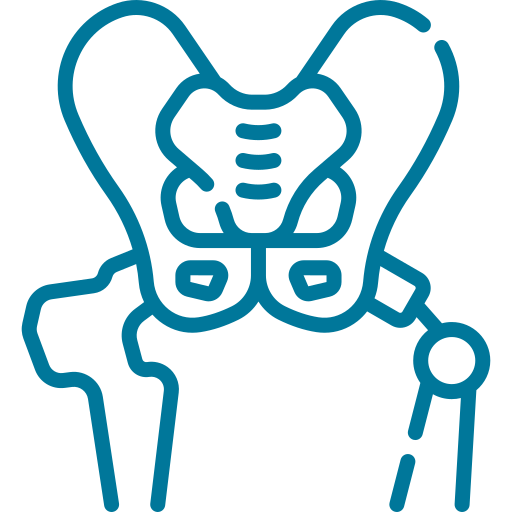Preparation
Before surgery, you will receive regional anaesthesia, which blocks pain across a wide area of your body but doesn't fully sedate you. This anaesthesia is also known as a spinal or spinal block.
Apollo has emerged as a pioneer in hip replacement surgery in the city with our team of expert surgeons boasting years of experience and skill to every procedure.
The state-of-the-art technology and exceptional infrastructure available will help patients in achieving prompt diagnosis and recovery.
From initial pre-surgery consultations to comprehensive post-operative rehabilitation, our team is dedicated to providing complete support at every stage, ultimately ensuring a successful recovery.
Hip replacement is a surgical procedure in which a surgeon removes the damaged portions of the hip joint and substitutes them with components typically made of metal, ceramic, and durable plastic. This artificial joint, known as a prosthesis, aims to reduce pain and enhance mobility.

Before surgery, you will receive regional anaesthesia, which blocks pain across a wide area of your body but doesn't fully sedate you. This anaesthesia is also known as a spinal or spinal block.
Regardless of the specific hip replacement type, your surgeon will extract bone and cartilage from your current hip joint and insert the prosthesis. These prosthetic hips are usually crafted from metal, plastic, or ceramic materials.

After surgery, you will transition to a recovery area for several hours as the anaesthesia wears off. Staff will watch your vital signs, comfort, and give any needed medication.

A total hip replacement involves the surgical replacement of your entire hip joint with a prosthetic one, including both the femoral head (the top of your thigh bone) and the acetabulum (the socket it fits into). This procedure is the most common type of hip replacement.

These are quite uncommon. In this procedure, only a portion of the hip joint is replaced. It is typically reserved for specific cases such as repairing certain types of hip fractures or removing particular tumours.

This surgical method uses smaller incisions and specialised tools to reach and replace the impaired hip joint, leading to less tissue damage and faster recovery periods. Recovery from minimally invasive hip replacement surgery typically takes about four weeks.
Benefits:
Throughout the surgical procedure, a robotic arm assists the surgeon in preparing the hip socket and positioning the hip implant. The robotic system provides real-time images and data to help the surgeon in achieving precise implant placement.
Benefits:Following surgery, you will be taken to the recovery room for close monitoring, typically lasting one to three hours. Vital signs like blood pressure, pulse, respiration, and temperature will be checked frequently.
Adhering to dietary recommendations from your doctor is essential for supporting recovery and ensuring proper nourishment. Performing deep breathing and coughing exercises after surgery is crucial for preventing complications such as congestion or pneumonia. Using an incentive spirometer can also assist in keeping your lungs clear and promoting optimal breathing.
At Apollo, we provide rehabilitation and physiotherapy services after hip replacement surgeries. Our team of skilled rehabilitation specialists and esteemed physiotherapists is dedicated to ensuring your well-being and facilitating a quick recovery process.
